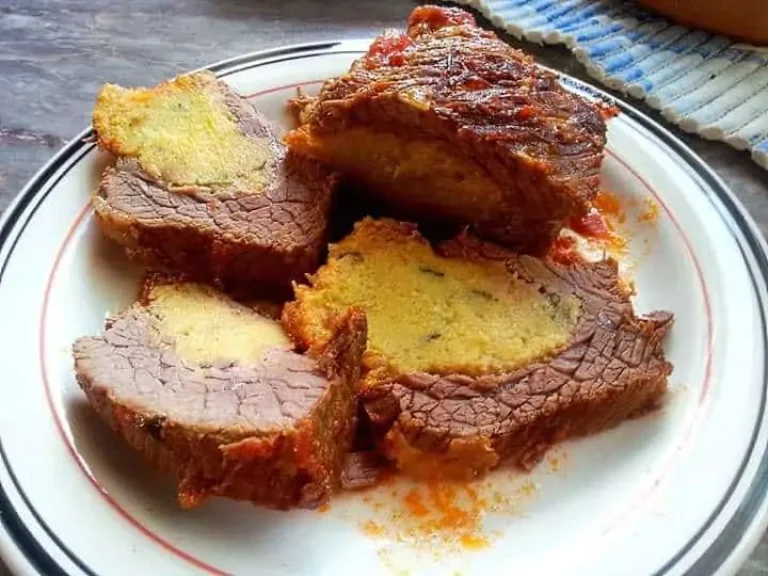The typical Fianchetto of Altavilla Irpina has origins lost in the centuries. Between 1600 and 1700 in particular, according to the recipes of the time, it was prepared mainly with the belly of pork or lamb or still with the castrated, from which it’s been used the terminal part of the cost. Today, instead, it mainly uses the beef or one of the many second category cuts suitable for this preparation. The Fianchetto, or more simply the stuffed meat, has had in the past a large diffusion in local communities but also at medieval courts. On the ancient origins of this dish in the vocabulary of the Crusca in 1623 the Fianchetto is better described, and we read: “…the belly of pork stuffed with meat, eggs, cheese and herbs beats together…”. The choice of the meat cut is fundamental to obtain a good beef Fianchetto. The Fianchetto is obtained by forming a recess inside the piece of meat (the pocket, in dialect a’ sacca), which is then stuffed, linked with needle and thread, and last cooked in sauce or in broth. In Altavillese tradition also other meats lend themselves to the preparation of the Fianchetto, as the pigeon, but the belly of pork, in my opinion, remains the most suitable for the preparation of a good one, thanks to the greater presence of fat and connective tissue.
Ingredients
for 4/6 diners
1 veal belly
600/800 gr. of veal flank
200 gr. crumbled bread (some do not use it, in which case you increase the number of eggs)
50 gr. of soppressata or sausage
50 gr. of salted lard
a handful of raisins or pine nuts (optional)
5 eggs (7/8 eggs if no bread is used)
50 gr. pecorino cheese (stomach delicates use parmesan)
garlic, parsley, onion
salt and pepper to taste
Method
For the filling: mix 5 eggs with bread soaked and wrung out, then add the cheese, the cubes of lard, garlic, parsley, salt and pepper (some also use pine nuts and/or raisins). Until a few decades ago the raisins was dried by Altavillesi families using the “roja grapes” of which remained in the village only an old specimen trained on a pergola, near the masseria Capone, in the hamlet of Ciampone. In case you don’t want to use bread: beat 7/8 eggs as for an omelet. Then add the cheese, the sopressata cut in small pieces, the diced lard, parsley, salt and pepper. Cook the omelet in a pan with a little of oil and turn off when the whole is still creamy. Stuff the bag with the filling and sew with needle and thread.
Cooking: in a saucepan, possibly in terracotta, lightly fry the onion, then add the Fianchetto and brown it well, then fade with good red wine, like our Aglianico. Finally pour the tomato puree and cook over low heat for two/three hours. At the end of cooking, the meat sauce will serve to dress the pasta, as our fusilli, while the Fianchetto will constitute the second course, served on a dish after being sliced and seasoned with a little bit of meat sauce. The Fianchetto as well as prepared for the meat sauce, can also be cooked in broth, giving to it flavors and scents highly appreciated by the aristocrats of taste.
… Enjoy it!
Source: www.altavillahistorica.it
Text and research: Raffaele Sarti



0 Comment